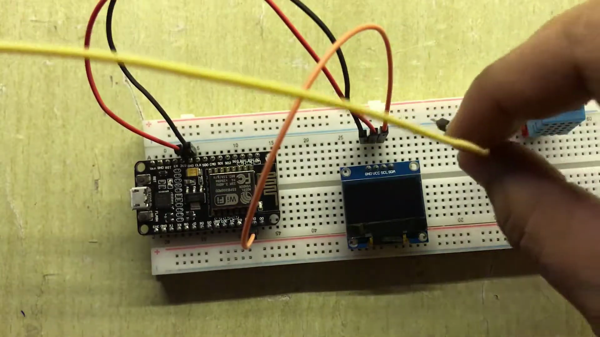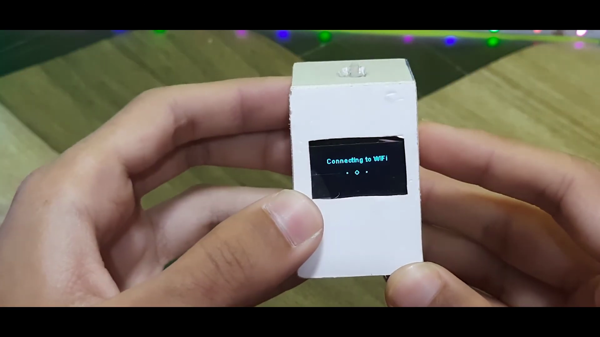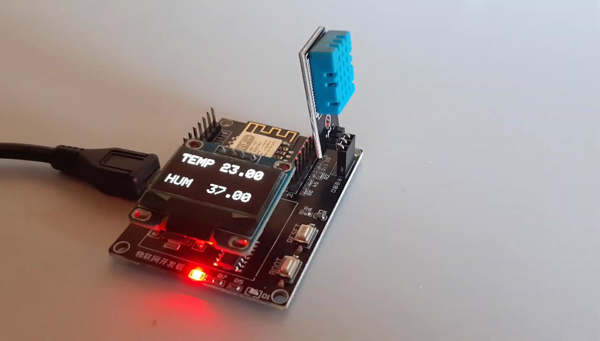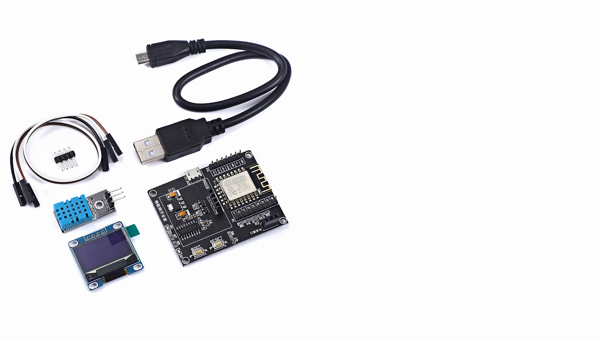Note: As an Amazon Associate I earn from qualifying purchases.
My thoughts on the ESP8266 Weather Station Kit: intuitive sensors & OLED display (2024)
Introduction
I recently assembled the ESP8266 Weather Station Kit and incorporated it into my smart home system while maintaining my minimalist approach. This project combined my passions for technology and saving space by enabling me to observe my indoor environment without the need for numerous gadgets.
Specifications
| Property | Value | Property | Value |
|---|---|---|---|
| Brand | ideaspark | Specific Uses For Product | IoT starter kits |
| Power Source | Battery Powered | Connectivity Technology | USB, I2C |
| Style | Modern | Color | Weather Station Kits |
| Included Components | Cable, Instruction Manual | Are Batteries Included | No |
| Shape | Rectangular | Display Type | LCD |
Photos
Click on photos to enlarge them:
Prices
Check prices of the ESP8266 Weather Station Kit with Sensors & OLED Display on:
Building the Weather Station
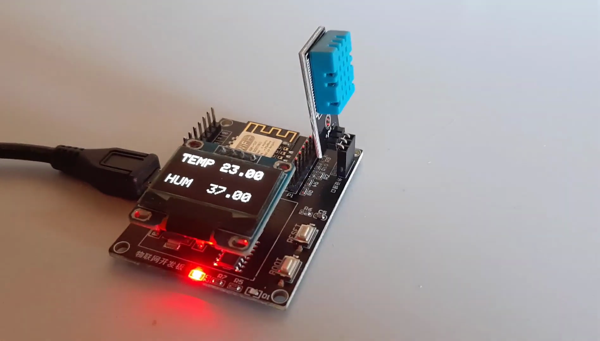
Assembling the ESP8266 Weather Station Kit was an engaging project involving programming, electronics, and data interaction. The kit comprises fundamental sensors: DHT11 for temperature and humidity, BMP180 for atmospheric pressure, and BH1750FVI for light intensity measurement, crucial for a weather station’s functionality.
Here’s a clear explanation of the first actions:
Attach header pins to boards by soldering.
Place the components on the breadboards according to instructions.
Flashing the ESP8266 with the appropriate firmware,
Writing code to integrate sensor data and
Set up to get weather data from online APIs.
While assembling the kit, I was drawn to the OLED Display’s functionality. It showcased vital data in a clear manner. The ESP8266 boasts a substantial 4MB flash memory and a full I/O port, making it an ideal pick for IoT projects.
One ongoing issue during the assembly was the insufficient instructions. With little help from the manual and at times, unclear or absent software configuration instructions, I frequently sought clarification on online forums and GitHub repositories, which proved both frustrating and educational.
The advertised three-day weather forecast feature encountered an issue due to OpenWeatherMap API modifications. Now, this API necessitates a paid key for accessing forecast data, which the kit’s documentation hadn’t been updated to indicate. This predicament compelled me to personalize the software, resulting in an educational yet laborious process.
Despite the drawbacks, I found the kit rewarding. The real-time environmental data displayed brought a sense of accomplishment. As my personal gadget, it started many conversations.
On the bright side:
Real-time data monitoring: Every few seconds, the device samples indoor conditions, offering a fascinating glimpse into the microclimate of my living space.
Connectivity: Once configured, the ESP8266 consistently uploads data to platforms like ThingSpeak, making remote monitoring possible.
Expandability: The kit serves as more than just a weather station—it’s a gateway into the world of IoT with ample scope for adding on sensors and functionality.
Potential users should be aware of the following:
Poor documentation: Expect to spend time searching online for tutorials to fill in the gaps left by the instructions.
Learning Curve: This kit is not entirely plug-and-play; a degree of prior knowledge with the Arduino IDE and electronics will be beneficial.
In conclusion, this weather station kit is a valuable investment. Each part functions effectively after initial setup challenges. It’s not merely a basic weather station; it opens up the exciting world of IoT applications, fostering creativity and technical proficiency.
Programming and Connectivity Issues

When using technology at home, smart devices offer significant benefits. I was drawn to the ESP8266 Weather Station Kit for my home automation projects. The thrill of opening the package and the eagerness to establish a successful data transmission kept me captivated. However, the setup and programming process presented several obstacles.
Here’s a description of my kit experience:
The ESP8266-12E module is a key component of the kit due to its strong features and Arduino compatibility. However, installing the firmware was challenging. I had to try several times before the code successfully transferred. The ESP8266Flasher tool was necessary for this task, but its guidance for troubleshooting left room for improvement.
As a Mac user, discovering that the USB-to-serial driver was specifically designed for Windows 10 was disappointing. I spent hours trying to find compatible drivers instead of how I had planned my evening.
Obtaining an API key from OpenWeatherMap was more complicated than expected. The process lacked clear directions, creating an unnecessary obstacle early in the setup process.
The DHT11, BMP180, and BH1750FVI sensors were available in the kit, but I expected a more comprehensive setup experience as the data they collected wasn’t displayed on the OLED screen right away.
The code provided for the “Arduino-compatible” device was not as straightforward as advertised. Its execution required extensive personal effort and external research for beginners to understand.
Despite these challenges, there were clear advantages:
Once operational, viewing real-time data from my phone on the weather station’s environment readings is satisfying. I find joy in observing this information.
GitHub provides numerous resources for customization with the open-source weather station. You can modify data collection intervals and add new functions, providing valuable learning experiences.
Overcoming programming and connectivity issues with IoT devices was challenging but valuable. I learned a lot during this process despite its difficulties.
The product requires a DIY approach and may not offer turnkey solutions. Improving customer support through a dedicated response team would enhance the user experience. Despite initial challenges, the ESP8266 Weather Station Kit serves as an entry point to IoT technology for those willing to invest time and effort.
Sensor Performance and Accuracy

When evaluating the sensor performance and accuracy of the ESP8266 Weather Station Kit, I adopt a balanced viewpoint. Here is my assessment:
The DHT11 Sensor is a popular choice for measuring temperature and humidity levels in various projects. Suitable for hobbyists and DIY enthusiasts, this sensor offers an affordable solution in the market. While it may not provide professional-grade accuracy, its ease of use and cost-effectiveness make it a go-to option for many.
BMP180 Barometric Sensor: This sensor provides accurate measurements of atmospheric pressure, which is essential for weather forecasting. Its advertised accuracy of up to 0.03hPa is impressive considering its size and cost.
For less complex or everyday uses, the BH1750FVI Light Sensor’s digital light intensity readouts are handy without requiring calibration. However, for scientific or precise measurements, a more advanced option may be preferred.
OLED Display: This display is bright and clear, enabling easy reading of data. However, to access forecasting data, you need a paid API key.
The use of quality components in the kit, such as the ESP8266-12E and OLED display, is commendable. Working with these quality components has been an enjoyable experience due to their reliability and the vast community resources available online for problem-solving and generating innovative project concepts.
On the DHT11 sensor, which measures temperature and humidity: its response can be delayed and may not be the most accurate option available. Yet, it is suitable for basic monitoring or educational projects due to its acceptable performance.
The BMP180 is a reliable atmospheric pressure sensor. Its consistent readings are essential for weather analysis. It smoothly integrates into the data collection process, adding substantial value to the setup.
Where it’s less ideal is with the BH1750FVI light sensor. While recognizing light intensity can be beneficial, its significance isn’t as immediate as other sensors within the context of the weather station. Without calibration, the data may not meet professional precision standards.
Now, accessing real-time data from the device is easy. Platforms like ThingSpeak let me check environmental monitoring charts to understand trends and current conditions. However, I’ve encountered an issue with the forecasting feature advertised on ThingSpeak. The OpenWeathermap API now requires a paid subscription for three-day forecast details.
In summary, the sensor kit’s offerings are a great starting point for environmental data logging for hobbyists and students. While it may not meet all professional requirements, the valuable hands-on experience and learning opportunities make it worthwhile.
Expanding Beyond the Kit

The ESP8266 Weather Station kit is a compelling gateway into the world of IoT and smart home integration. At its core, the kit allows enthusiasts to monitor environmental conditions, a fundamental component of a smart home setup. Having used the kit myself, I appreciate the ease of customization and the breadth of data points available, which include temperature, humidity, light, and atmospheric pressure.
Pros:
Great educational tool for beginners
Collecting data comprehensively is a key capability.
Wireless internet is a significant benefit.
Versatile components that can be repurposed
Cons:
Instructions can be unclear and hard to follow
Setting up and customizing this process takes extra work.
Some components may not meet top-quality standards.
Limited functionality out-of-the-box
My experience with this kit extends beyond simple assembly and usage. The open-source ESP8266 and components allow for customization, transforming the weather station into a plant monitoring system with moisture sensors.
One limitation I’ve observed is that documentation can be scattered and sometimes outdated. A good starting point for resolution is the active GitHub repositories for the ESP8266 where the community often updates codes and fixes bugs. Despite this, the learning curve can be steep and the setup finicky.
In the realm of minimalism, this kit is a good fit due to its ability to minimize redundancy. Instead of purchasing multiple singular-purpose gadgets, a tinkerer can combine various sensors into this sole platform. This approach saves space and adheres to minimalism’s economic and environmental tenets by reusing and repurposing rather than consuming excessively.
As for smart home integration, once the weather station collects real-time data, it can send this information to a home automation system using MQTT or similar protocols. This allows for automated responses based on the data, such as adjusting thermostats or smart blinds.
In conclusion, the ESP8266 Weather Station Kit may not be suitable for those seeking a ready-to-go solution. However, it offers great value as an educational resource and foundation for DIY enthusiasts interested in smart home projects. Through my experience with this kit, I have gained valuable insights into IoT technology and discovered numerous opportunities for expansion within the realm of smart living and home automation. With persistence and exploration, the potential for growth beyond the initial offering is substantial.
